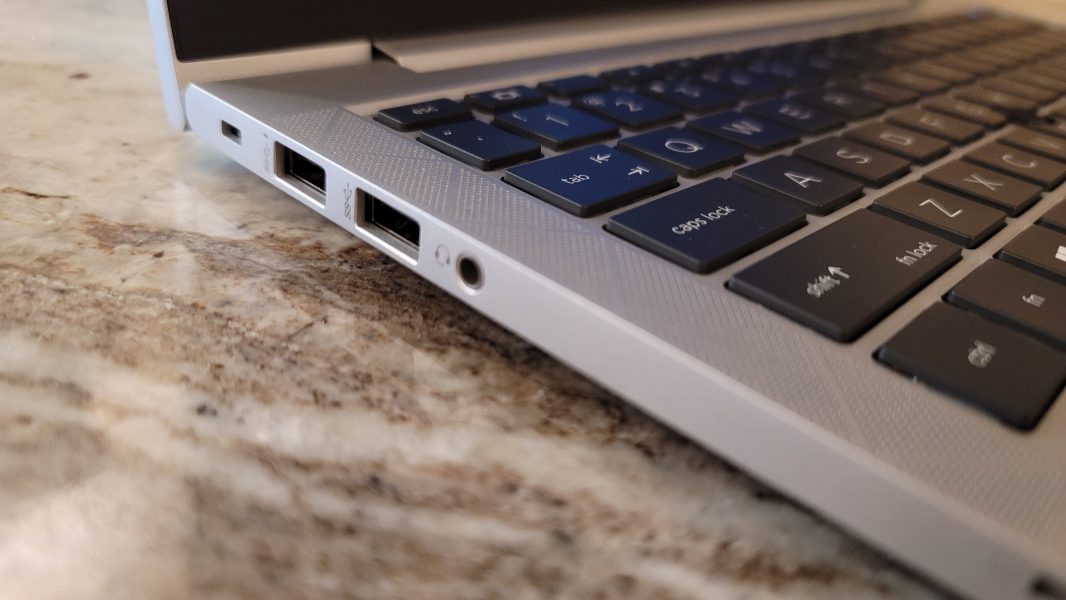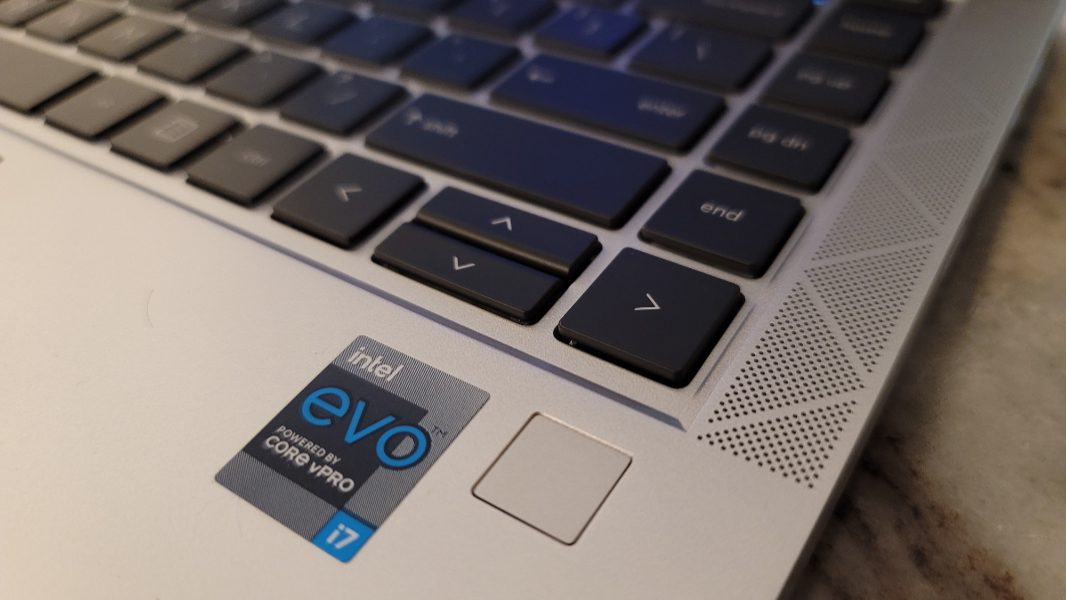Hands-On with the HP EliteBook 840 Aero G8
- Paul Thurrott
- Aug 01, 2021
-
5

The HP EliteBook 840 Aero utilizes a magnesium alloy to shave the PC’s weight down to just 2.48 pounds. What a difference half a pound makes.
I reviewed the EliteBook 840 G7 back in March, and HP was, by that time, already selling a G8 version that substituted the review unit’s 10th-generation Intel Core U-series processor with 11th-generation parts. My understanding is that G7 and G8 versions of the EliteBook 840 are otherwise identical, and so I wish I still had that review unit on hand to compare it to the EliteBook 840 Aero G8, which is likewise identical to the non-Aero 840 aside from the material change and the resulting weight loss. But I don’t, thanks to my ongoing declutter crusade.
Windows Intelligence In Your Inbox
Sign up for our new free newsletter to get three time-saving tips each Friday — and get free copies of Paul Thurrott's Windows 11 and Windows 10 Field Guides (normally $9.99) as a special welcome gift!
"*" indicates required fields
So I’ll instead need to go off of my earlier review and the information that HP supplied during a recent briefing. And since the machines are otherwise identical, I don’t see the need for a month-plus review process and another 2000-3000 words of writing. Instead, I’ll just highlight what’s new and provide my own observations.
The first observation is obvious enough: Switching out key chassis components from aluminum to magnesium has made a huge impact. The stock EliteBook 840 weighs just under 3 pounds, nearly ideal for a 14-inch laptop these days, and as I noted in my review, it feels even lighter than that. Well, the EliteBook 840 Aero weighs just under 2.5 pounds, or about 16-17 percent less than the 840. And it’s so light it feels like a hollow manufacturing prototype. OK, that’s a slight exaggeration, but the weight loss is instantly noticeable, and it is quite desirable.

I hope this experience inspires HP to investigate doing similarly for its other premium PCs, and that other PC makers follow suit. (Though, to be fair, Lenovo has long used magnesium hybrid materials in its high-end ThinkPads.) The firm has experimented with magnesium elsewhere, and its 13.3-inch Elite Dragonfly PCs weigh just 2.18 to 2.5 pounds, depending on the battery. And when it comes to portability, every ounce counts.
That said, portability doesn’t exist in a vacuum and some PCs are relatively light but cheaply made. But here, HP was also able to retain the non-Aero 840’s durability: The EliteBook 840 Aero passes the same MIL-STD durability tests as does its all-aluminum siblings. In the hand, it does feel a bit different, but I can’t tell if that’s the material or just the weight. Whatever, it’s quite pleasant, and a good example of how HP can shift its premium products to new materials without alienating some customers as it did with the blue Dragonfly products. (Which I happen to love, but I can see where it’s polarizing to some.)
OK, let’s look at the specifications. Here, I’ll be comparing the EliteBook 840 Aero G8 review unit to the EliteBook 840 G7 review unit that I used previously.
Where the 840 G7 was powered by 10th-generation Intel Core i5 and i7 processors with UHD graphics, the 840 Aero G8 takes a big step up, especially in the graphics department, with 11th-generation Intel Core i5 and i7 processors and Intel Iris Xe graphics. This change won’t magically turn the 840 into a gaming-class PC, of course, but it will matter in apps like Excel and should make some low-end gaming more feasible. The review unit has a Core i7-1185G7 processor, which is the most powerful version available in this machine, and it can be had in Evo or vPro configurations.
RAM and storage are identical between the two: The 840 Aero can be configured with 8, 16, 32, or 64 GB of DDR4 3200 RAM and 256 GB, 512 GB, 1 TB, or 2 TB of NVMe SSD storage, and the review unit was configured with 16 GB and 512 GB, respectively.
The display choices are likewise similar, if not identical, and are quite voluminous in quantity, but they are all 14-inch Full HD (1920 x 1080) LED display panels with an unfortunate 16:9 aspect ratio and an antiglare coating.

You can opt for HP’s excellent Sure View privacy technology—not in the review unit—and choose between a dim 250 nits of brightness or a brighter 400 nits. The bezels are not tiny, but not objectionable.

Connectivity and expansion ports are unchanged, along with the design. So you get Intel ntel AX201 Wi-Fi 6 and Bluetooth 5, NFC, and optional 4G/LTE Cat9 or 5G via a SIM card slot. And for expansion, a versatile mix of ports that includes two full-sized USB 3.1 ports, a headphone jack, a lock slot, and a smart card reader on the left and a circular, barrel-style power port, a full-sized HDMI 1.4 port, two USB-C/Thunderbolt 4 ports, and a nano-SIM card slot. (The 840 G7 had USB-C/Thunderbolt 3.)

That barrel-style power port is a nice option. The 840 Aero actually arrived with a standard USB-C power supply, but you can use an HP barrel-style power supply instead, and keep those two USB-C ports open. Even better, because the barrel-style power port is at the far end of the right side, and the barrel connector on HP’s power supply is L-shaped, it won’t get in the way.

The 840 Aero shares the upward-firing stereo speakers with Bang & Olufsen tuning found in its predecessors, and it sounds fantastic, aided in part by an HP Audio Control app that can be configured to auto-detect content types and adjust the sound dynamically. It also has the same middling 720p webcam, though to be fair, it offers a wide 75-degree field of view and Windows Hello facial recognition capabilities. It also has the same two front-facing microphones, plus a single world-facing microphone with noise cancelation.

There’s not much to say about the external design, which is unchanged and uses the same attractive, professional, and angular design as before. This is a good look for a business-class PC, from its easy-open lid to its unique speaker grill design.

The keyboard, dual-pointing system, and deck-mounted fingerprint reader are likewise all unchanged and remain excellent, if not best-in-class. I’m not a fan of the pointer nubbin, but it doesn’t get in the way, and the glass touchpad works fine without it.

From a software perspective, HP continues to bog down its business-class PCs with bloatware, some of which will be useful for IT departments, and some of which will simply be annoying to individuals. I counted 15 HP-branded applications and utilities in the Start menu, along with four for Intel a one related to the PC’s Tile integration—a nice touch in any PC. But software bloat remains a problem.
There are two issues that are semi-unique to the Aero: Price and availability.
As you might expect, the Aero’s lighter weight costs extra, and from what I can tell, it’s about $100 extra, depending on the configuration. To test this theory, I configured an EliteBook 840 G8 and an EliteBook 840 Aero G8 as identically as is possible—Core i5-1135G7 processor, 8 GB of RAM, 256 GB of storage, and the base 250-nit display panel—and the resulting prices, $1571 and $1663, just about bear that out.
The second is availability. Thanks to the ongoing component shortage, it’s possible that you’ll have trouble finding an EliteBook 840 Aero for the foreseeable future. In fact, that $1663 configuration I created won’t be available until January 2022 (!), according to the HP website. This, too, may vary by configuration.
Overall, the HP EliteBook 840 Aero is desirable for all the same reasons as are the non-Aero configurations, but the lower weight makes a big difference, and if you can find one, I definitely recommend going that route.
At-a-glance
Pros
- Lightweight
- Professional, business-class design
- Excellent keyboard
- Great selection of new and legacy ports
- Surprisingly good audio performance
Cons
- 16:9 display
- Bloatware
- Availability